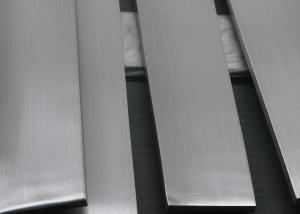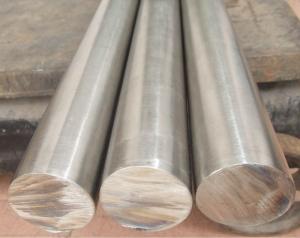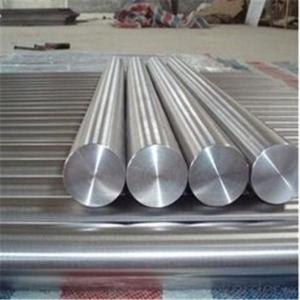Stainless Steel Seamless Steel Pipe Factory
- Loading Port:
- China Main Port
- Payment Terms:
- TT or LC
- Min Order Qty:
- 30 m.t.
- Supply Capability:
- 12000 m.t./month
OKorder Service Pledge
OKorder Financial Service
You Might Also Like
Specifications
1、Structure of Seamless Pipe ASTM A106/53:
Seamless pipe is formed by drawing a solid billet over a piercing rod to create the hollow shell. As the manufacturing process does not include any welding, seamless pipes are perceived to be stronger and more reliable. Historically seamless pipe was regarded as withstanding pressure better than other types, and was often more easily available than welded pipe.
Application
kitchen and sanitary wares , and Structural use high strength components,furniture
handles , handrails , electroplating and electrolyzing pendants , foods, electron ,
petroleum , construction and decoration , etc
Packing and shipment
Packaged in bundles,as per customers' requirements, it can also bepackagesd as beveled ends, typed marking, black painting, plastic caps protection,woven bags packing
For 20" container the max length is 5.8m; For 40" container the max length is 12m. other options are available based on customer requests. Please discuss when placing orders.
2、Main Features of the Seamless Pipe ASTM A106/53:
• High manufacturing accuracy
• High strength
• Small inertia resistance
• Strong heat dissipation ability
• Good visual effect
• Reasonable price
3、Seamless Pipe ASTM A106/53 Specification:
Standard | GB, DIN, ASTM ASTM A106-2006, ASTM A53-2007 |
Grade | 10#-45#, 16Mn 10#, 20#, 45#, 16Mn |
Thickness | 8 - 33 mm |
Section Shape | Round |
Outer Diameter | 133 - 219 mm |
Place of Origin | Shandong, China (Mainland) |
Secondary Or Not | Non-secondary |
Application | Hydraulic Pipe |
Technique | Cold Drawn |
Certification | API |
Surface Treatment | factory state or painted black |
Special Pipe | API Pipe |
Alloy Or Not | Non-alloy |
Length | 5-12M |
Outer Diameter | 21.3-610mm |
Grade | 20#, 45#, Q345, API J55, API K55, API L80, API N80, API P110, A53B |
Standard | ASME, ASTM |
1) Material:20#(ASTM A 106/A53 GRB.API5LGRB,GB),45#,16Mn,10#.
2) Specification range:OD:21.3-610mm,WT:6-70mm,length:6-12m or according to the requirement of clients.
3) Excutive standards:GB,ASME API5L.ASTM A 106/A53,Despite of the above standards,we can also supply seamless steel pipe with standard of DIN,JIS,and so on,and also develop new products according to the requirements of our clients!
4) Surface:black lacquered,varnish coating or galvanized.
5) Ends:Beveled or square cut,plastic capped,painted.
6) Packing:bundles wrapped with strong steel strip,seaworthy packing.
4、Packaging & Delivery
Packaging Details: | seaworthy package,bundles wrapped with strong steel strip |
Delivery Detail: | 15-30days after received 30%TT |
5、FAQ of Seamless Pipe ASTM A106/53:
①How is the quality of your products?
Our products are manufactured strictly according to national and internaional standard, and we take a test
on every pipe before delivered out. If you want see our quality certifications and all kinds of testing report, please just ask us for it.
Guaranteed: If products’ quality don’t accord to discription as we give or the promise before you place order, we promise 100% refund.
②How about price?
Yes, we are factory and be able to give you lowest price below market one, and we have a policy that “ for saving time and absolutely honest business attitude, we quote as lowest as possible for any customer, and discount can be given according to quantity”,if you like bargain and factory price is not low enough as you think, just don’t waste your time.Please trust the quotation we would give you, it is professional one.
③Why should you chose us?
Chose happens because of quality, then price, We can give you both.Additionally, we can also offer professional products inquiry, products knowledge train(for agents), smooth goods delivery, exellent customer solution proposals.Our service formula: good quality+good price+good service=customer’s trust
SGS test is available, customer inspection before shipping is welcome, third party inspection is no problem.
6、Seamless Pipe ASTM A106/53 Images:



- Q: What is the hardness of 416 stainless steel bars after heat treatment?
- Martensitic stainless steel refers to the stainless steel that can be adjusted to its mechanical properties by overheating. It is, in general, a hardened stainless steel, typically of type Cr13. After quenching the hardness is higher, different tempering temperature has different strength and toughness combination, mainly used in steam turbine blades, tableware, surgical instruments.
- Q: What is the melting point of stainless steel bars?
- The melting point of stainless steel bars may differ depending on the specific grade or composition of the stainless steel. Typically, stainless steel possesses a higher melting point in comparison to other steel types due to the presence of alloying elements like chromium, nickel, and molybdenum. Generally, the melting point of stainless steel bars falls within the range of approximately 1400 to 1450 degrees Celsius (2552 to 2642 degrees Fahrenheit). Nonetheless, it is important to bear in mind that varying grades of stainless steel might exhibit slightly different melting points. Therefore, it is always advisable to refer to the specific technical data sheet or manufacturer's information for precise melting point values.
- Q: Are stainless steel bars suitable for seawater applications?
- Yes, stainless steel bars are suitable for seawater applications due to their corrosion resistance properties. Stainless steel contains chromium, which forms a protective layer on the surface, preventing corrosion and making it ideal for use in marine environments.
- Q: Are stainless steel bars suitable for food storage containers?
- Yes, stainless steel bars are suitable for food storage containers. Stainless steel is a highly durable and corrosion-resistant material that is commonly used in the food industry. It is non-reactive, meaning it does not leach any harmful chemicals into the stored food, ensuring the safety and quality of the contents. Stainless steel bars are also easy to clean and maintain, making them ideal for food storage containers. Additionally, stainless steel has excellent temperature retention properties, allowing it to keep food hot or cold for extended periods. Overall, stainless steel bars are a reliable and hygienic choice for food storage containers.
- Q: Can stainless steel bars be used in oil and gas pipelines?
- Yes, stainless steel bars can be used in oil and gas pipelines. Stainless steel is a corrosion-resistant material that provides excellent resistance to chemicals and high temperatures, making it well-suited for use in the oil and gas industry. It offers superior strength and durability, making it suitable for pipelines that transport oil and gas over long distances. Stainless steel bars are commonly used to manufacture pipeline components such as valves, fittings, and flanges due to their ability to withstand harsh environmental conditions and corrosive substances found in oil and gas. Furthermore, stainless steel is also easy to clean and maintain, ensuring the longevity and reliability of the pipelines.
- Q: How do stainless steel bars resist scaling at high temperatures?
- Stainless steel bars resist scaling at high temperatures due to their unique composition and structure. Stainless steel is an alloy of iron, chromium, and other elements, which forms a protective layer of chromium oxide on the surface when exposed to air or moisture. This layer is extremely thin and tightly adheres to the steel, acting as a barrier against oxidation and scaling. The high chromium content in stainless steel bars, typically around 10-30%, is the key factor in their resistance to scaling. Chromium is highly reactive with oxygen and readily forms a stable oxide layer, even at elevated temperatures. This oxide layer prevents further oxidation of the underlying metal, effectively protecting the stainless steel from scaling. Additionally, stainless steel bars are often alloyed with other elements such as nickel, molybdenum, and titanium, which further enhance their high-temperature resistance. These alloying elements contribute to the formation of a more stable and dense oxide layer, making stainless steel bars even more resistant to scaling at extreme temperatures. Furthermore, stainless steel bars are typically manufactured with a fine-grained structure, which improves their resistance to scaling. The fine-grained structure provides a higher density of chromium oxide particles on the surface, increasing the protective effect against scaling. Overall, the combination of high chromium content, alloying elements, and fine-grained structure make stainless steel bars highly resistant to scaling at high temperatures. This resistance is crucial in various applications where the bars are exposed to extreme heat, such as in the construction of furnaces, boilers, and high-temperature processing equipment.
- Q: Can stainless steel bars be plated or coated?
- Yes, stainless steel bars can be plated or coated. Plating or coating stainless steel bars can enhance their appearance, provide corrosion resistance, or improve their performance in specific applications.
- Q: Are stainless steel bars suitable for industrial pumps?
- Industrial pumps can benefit from the use of stainless steel bars. This material is highly durable and can resist corrosion, making it an excellent choice for various industrial applications, including pumps. It offers exceptional resistance to rust, corrosion, and chemicals, ensuring that the pump system will last for a long time and remain reliable. Additionally, stainless steel bars are known for their strength and ability to withstand high-pressure and high-temperature environments commonly found in industrial operations. Moreover, these bars can be easily machined and fabricated to meet specific design requirements, making them versatile for use in different types of industrial pumps. In summary, stainless steel bars possess the necessary qualities and performance capabilities needed for efficient and long-lasting operation in industrial pump systems.
- Q: Are stainless steel bars suitable for agricultural equipment?
- Agricultural equipment can benefit greatly from the use of stainless steel bars. This material is versatile and durable, providing numerous advantages in farming applications. To begin with, stainless steel is incredibly resistant to corrosion and rust, making it an ideal choice for outdoor and wet environments commonly found in agriculture. It can endure exposure to moisture, chemicals, and fertilizers without deteriorating, ensuring that equipment lasts longer. Moreover, stainless steel boasts exceptional strength and durability, making it suitable for heavy-duty applications in agriculture. It can withstand high loads, impacts, and stresses, making it reliable for machinery and equipment that may encounter rough handling or harsh operating conditions. In addition, stainless steel is easy to clean and maintain, which is crucial in agricultural settings where equipment often comes into contact with dirt, debris, and organic matter. Its smooth surface also prevents bacterial growth, ensuring better hygiene and reducing the risk of contamination. Furthermore, stainless steel is renowned for its aesthetic appeal and ability to maintain its appearance over time. This makes it a popular choice for equipment that may be visible to customers or used for promotional purposes. In conclusion, stainless steel bars are an excellent option for agricultural equipment due to their corrosion resistance, strength, durability, ease of maintenance, and aesthetic appeal. They provide a reliable and long-lasting solution for various farming applications, contributing to increased efficiency, productivity, and cost-effectiveness in the industry.
- Q: What are the tolerance standards for stainless steel flat bars?
- The tolerance standards for stainless steel flat bars can vary depending on the specific requirements and standards set by the industry or application. Generally, the tolerance standards for stainless steel flat bars are determined by the dimensions and the desired level of precision. In terms of dimensions, the tolerance standards typically include tolerances for width, thickness, and length. For example, the width tolerance may range from a few millimeters to a few centimeters, depending on the size and purpose of the flat bar. The thickness tolerance can also vary, typically ranging from a few tenths of a millimeter to a few millimeters. The length tolerance is usually specified in terms of a percentage or a fixed value. Additionally, the tolerance standards can also include requirements for straightness, surface finish, and even chemical composition. Straightness tolerance specifies the maximum deviation from a straight line that the flat bar can have. Surface finish tolerance defines the acceptable level of smoothness or roughness of the bar's surface. And the chemical composition tolerance ensures that the stainless steel flat bar meets the required levels of specific elements and impurities. It is important to note that different industries or applications may have their own specific tolerance standards, which can be more stringent than general standards. Therefore, it is essential to consult the relevant industry standards or specifications to determine the appropriate tolerance standards for stainless steel flat bars in a particular context.
Send your message to us
Stainless Steel Seamless Steel Pipe Factory
- Loading Port:
- China Main Port
- Payment Terms:
- TT or LC
- Min Order Qty:
- 30 m.t.
- Supply Capability:
- 12000 m.t./month
OKorder Service Pledge
OKorder Financial Service
Similar products
Hot products
Hot Searches
Related keywords

























